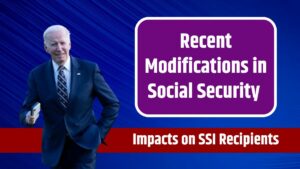The Social Security Administration (SSA) has announced a new increase in Supplemental Security Income (SSI) payments for 2024. These changes aim to support vulnerable Americans, including those over 65, people with disabilities, and qualifying children. SSI has provided crucial financial assistance for over 50 years, yet many still face difficulties accessing these benefits due to stringent eligibility requirements. Here, we’ll look into the key details of these changes and what they mean for current and potential beneficiaries.
What is SSI?
SSI, or Supplemental Security Income, is a federal program that provides financial support to individuals who are elderly, disabled, or minors in financially vulnerable situations. To qualify, beneficiaries must meet strict income and resource limits. These payments help cover basic living expenses, offering a lifeline to those who struggle to make ends meet.
Despite the importance of SSI, not everyone in need qualifies. Strict eligibility rules, such as income caps and asset limits, prevent many low-income individuals from receiving aid. For example, a single person cannot hold more than $2,000 in assets, while couples are capped at $3,000. These limits, set in 1989, haven’t been adjusted for inflation, leaving many unable to save without losing their eligibility.
SSI Payment Increase
In response to inflation and rising living costs, the SSA has introduced an increase in SSI payments for 2024, benefiting thousands of Americans. This increase comes amid growing concerns over outdated asset limits that make it difficult for beneficiaries to save for emergencies or plan for the future. While only Congress can alter these limits, the SSA’s recent updates aim to reduce the burden on SSI recipients.
Asset Limits
The current asset limits for SSI eligibility—$2,000 for individuals and $3,000 for couples—have not changed since 1989, creating significant financial hurdles for many potential beneficiaries. Over the years, proposals have been made to raise these limits. For example, a 2003 recommendation suggested increasing the limit to $3,000 for individuals and $4,500 for couples, adjusting annually for inflation. However, Congress has yet to pass these reforms, leaving SSI beneficiaries stuck with outdated limits.
Recently, there have been renewed discussions in Congress about modernizing SSI’s asset limits. The SSA has expressed its willingness to work with lawmakers to explore changes that would improve access to benefits and better support low-income individuals.
New SSI Improvements
Although Congress has not yet revised asset limits, the SSA has made several significant administrative improvements to help current and potential beneficiaries. These changes aim to simplify the application process, increase benefit amounts, and reduce reporting burdens.
1. Removal of Food Assistance
Previously, food assistance from family or friends counted against an applicant’s eligibility for SSI under the in-kind support and maintenance (ISM) rules. In 2024, the SSA will no longer consider this assistance, allowing more people to qualify for benefits. This change is expected to increase monthly SSI payments by approximately $131 for over 90,000 individuals.
2. Rental Subsidy Exception
The SSA has also expanded the rental subsidy exception, which previously applied in only seven states, to all SSI applicants nationwide. This change will increase monthly payments by about $132 for approximately 41,000 people, making more individuals eligible for SSI.
3. Public Assistance Household
The SSA now includes Supplemental Nutrition Assistance Program (SNAP) benefits in its definition of public assistance, simplifying the qualification process. Additionally, the requirement that all household members receive public assistance has been removed. Together, these changes are expected to benefit around 277,000 people, increasing their payments and easing their reporting obligations.
The Future of SSI
While these new improvements represent a step in the right direction for SSI beneficiaries, there is still a long way to go. Outdated asset limits and strict eligibility rules continue to hinder access to these critical benefits for millions of Americans. Congress must address these issues and modernize the SSI program to better align with today’s economic realities.
The ongoing discussion about raising asset limits could result in long-awaited changes that would significantly improve the quality of life for SSI recipients. Until then, the recent administrative updates provide some relief, helping thousands of Americans receive the support they need.
FAQs
Who qualifies for SSI?
SSI supports individuals over 65, people with disabilities, and minors with limited income.
How much can a single person have in assets to qualify for SSI?
A single person can hold no more than $2,000 in assets.
How will food assistance affect SSI eligibility in 2024?
Food assistance from family or friends will no longer count against SSI eligibility.
What is the rental subsidy exception?
It allows applicants to qualify for SSI without their rental subsidy affecting their eligibility.
Can SSI benefits change in the future?
Yes, future reforms could adjust asset limits and other eligibility rules.









